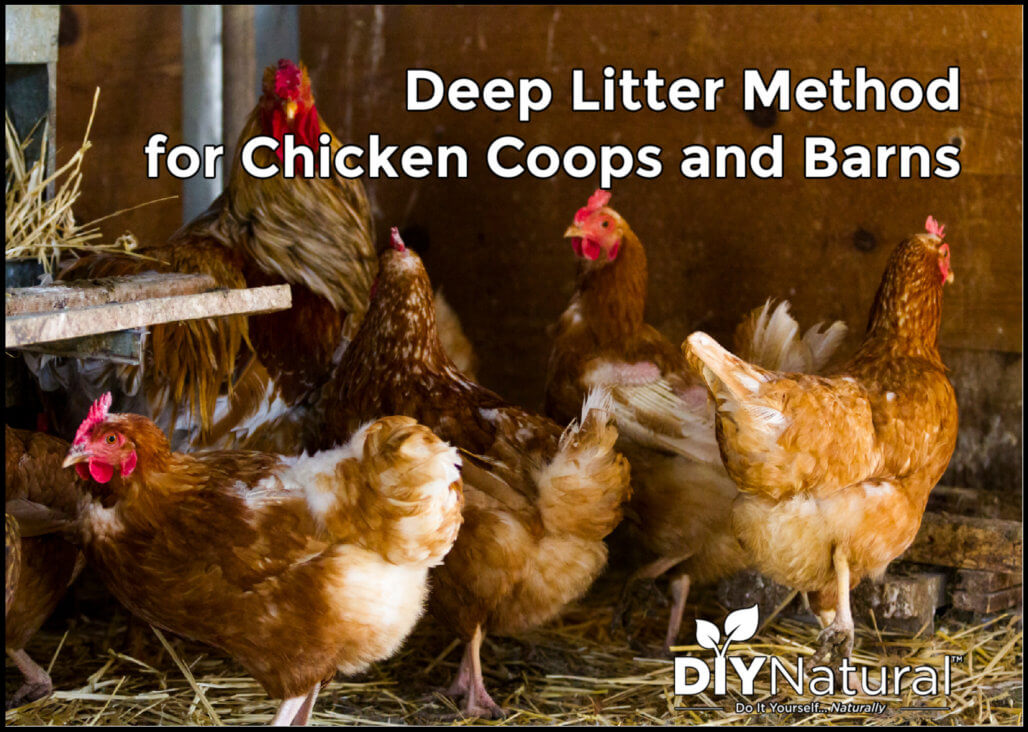

The deep litter method for chicken coops uses multiple layers of organic bedding to insulate animals and oust the need for weekly cleanings.
When I moved from Minnesota to North Carolina, I worried about my animals in the winter. I have chickens and goats. While it doesn’t get -20-30°f here, like in Minnesota, it does rain a lot and then freeze. Animals can get very cold and stay chilled in this kind of weather. What was I to do to keep them warm?
Deep Litter Method
As I was reading through the many forums that I belong to, I kept hitting on one thing. Deep litter. What was that and how did it work? As it turns out, it’s really simple. Start with a clean slate, add more litter once a week and you provide a barrier from the cold ground for your animals to help keep them warm.
Deep Litter Material
Any carbon-based material will work, just be sure that you have enough for your sized chicken coop.
I use wood shavings, but you can use any number of litter materials:
- sawdust or wood shavings
- straw
- wood chips
- grass clippings
- hay
- leaves
- shredded paper.
Sawdust or wood shavings are best for the deep litter method if you have several types of animals. Dried leaves will work, but they are not as absorbent and certain leaves, like oak leaves, can contain tannins that aren’t good for animals if they eat too much. Straw is the next best bedding, but it can mat down quickly and the chickens may start laying their eggs in random spots. Hay is good, but at $9.00 a bale right now, it can get expensive. Goats tend to waste a lot of hay and won’t eat it once it hits the ground, so I save that for my hen house. Wood chips aren’t fluffy like sawdust is, but they will work if you don’t have sawdust.
READ RELATED: UK coronavirus deaths announced for Thursday
Adding to the Litter
To make the deep litter method work, you won’t be cleaning out the barn or coop as much as you normally would. Add a layer of whatever you decide to use and let things go for a week or so. At the end of the week, re-evaluate your litter. If it still looks good, just add some more. If there is a spot that is used more than others, like right under the roosts, then you can scoop that out and add more. Or just add more litter over that spot. Some people use a board under the roosts that can be removed and cleaned weekly. I haven’t gotten that ambitious yet!
Diatomaceous Earth for Mite Control
You can also add diatomaceous earth to your deep litter method bedding layers. I add a bit to mine just to keep pests to a minimum. No more fleas, ticks, mites, or anything like that!
As the weeks of winter go on, just keep adding more shavings. The added litter provides a layer of warmth by creating air pockets that insulate against the cold. Animals produce heat, making the coop or barn just that much warmer. And because the shavings are dry, they can help dry off wet animals quickly.
Cleaning Out the Coop
Some people prefer weekly cleaning, others biannual. With the deep litter method, you will only be cleaning the coop or barn once or twice a year. Which, to me, is way better than scraping and cleaning the floor several times each week! That said, it’s a bigger job when it needs to be done. However, it also provides compost for your garden.
Compost
The deep litter at the very bottom will be pretty composted and can be used in the garden if mixed lightly. Don’t use too much as it can still be high in nitrogen, which can burn some plants. You can also add it to your compost. I have a three-station compost bin where I put all of the compost for one year in one section. By the time the third year rolls around, the compost in bin one is like black gold. Rich in organic matter, it’s heaven for gardens.
Have you tried the deep litter method for your chicken coop or barn? What did you think of it?
*******
Source: DIY Natural










